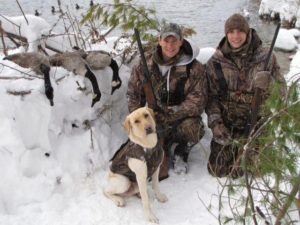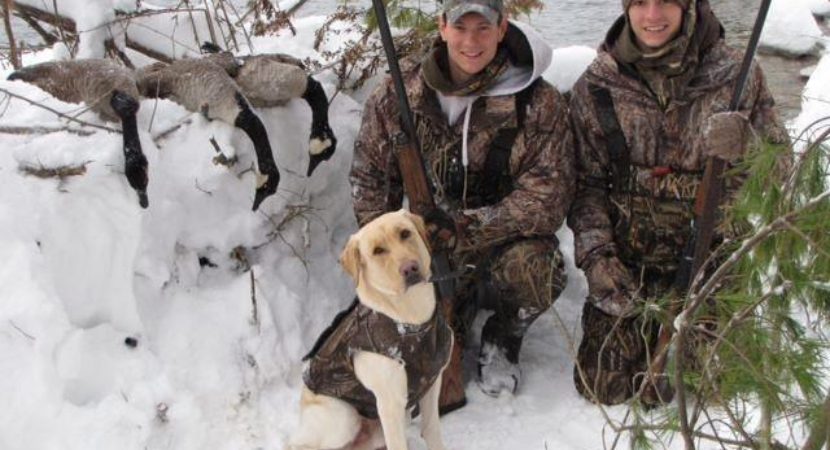In our last article, Choose Puppy Selection: Choosing The Right Puppy To Avoid A Gun Shy Dog, we showed you how to pick a confident, out-going pup to minimize the possibility of ending up with a dog that is gun-shy. In this article, we’ll give you some basics about how to introduce your future hunting dog to sudden loud noises, including gun-fire, properly.

To have a hunting dog who is happy to hear the sound of gunfire, make sure your pup associates the noise with something he loves. With puppies, you can be sure that one of the things he loves best is his food. One way to accustom your hunting dog pup to loud noises is to wait until he is eating and clap your hands together a couple of times. He may or may not bother to look around. Do this several days in a row and when he stops paying any attention to your clapping, substitute a couple of pans. Stand at the far side of the room from where the pup is eating and bang the pans together – just once or twice. The pup will probably stop eating and look at you. If you act as if nothing out of the ordinary has happened the pup should be reassured and continue eating. After a few days of the pans being banged while he is eating, he probably won’t even take his head out of the dish.
When the puppy is completely at ease with the noise of the pans, it is time to raise the stakes a bit. If the puppy is fed outside, place the puppy’s bowl on the ground and walk to the far side of the yard. Fire a couple of shots from a pistol loaded with low-volume blanks and see if there is any reaction (be sure you are not breaking any local laws, please). If the pup shows any signs of being scared, go back to the pans for a few days. Only when the pup shows no react to the blanks while he is eating is it time to progress further.
While the puppies are playing and romping in the field, is another good time to let them hear gun fire. Again, this is something that all puppies love and the noise will have something positive attached to it. Have someone standing about 35 to 40 yards away fire a couple of low-volume blanks and watch for a reaction – either positive or negative. Pace your training accordingly; a negative reaction from the dog means you need to go back a step, but a positive reaction or no reaction at all means you can move ahead. Don’t think that because the dog doesn’t react to the first shot you need to burn up a whole box of shells or move to more powerful ammo the first day out. Three or four shots a day, several days a week is plenty.
Next step involves you and an assistant. Have your assistant stand about 45 yards away from you and the dog. Toss a feathered dummy and allow the pup to start a retrieve. When the dog is about 2/3 of the way to the thrown dummy, your assistant should fire the blank-loaded pistol. Hopefully, the dog will ignore the gun-fire and finish the retrieve and he should be praised for his success. If the noise seems to startle him, it’s time to back off for a few days and then try again.
After a few successful days with the blanks and the feathered dummy, move to a clipped-wing pigeon. The increase in the dog’s level of excitement at the live bird should balance out the fact that after just a couple of shots, you will have your assistant begin to fire the gun from a slightly closer position. As always, go slow. Work your way up from your low-volume blanks to, say a 410 shotgun; then on up to your 12-guage. But always watch the dog for signs that he is uneasy with the noise and be willing to back up a step or two.
Eventually you will be able to fire the gun with the dog right beside you and have him show no signs of distress. In fact, the dog should become excited because it means a chance to retrieve. The key is to success is a slow and steady progression and allowing the dog to get used to the increasing level of noise without becoming afraid.


Reply